The Codex Seraphinianus is an illustrated encyclopedia of an imaginary world, created by Italian artist, architect and industrial designer Luigi Serafini between 1976 and 1978. It is approximately 360 pages (depending on edition) and written in an imaginary language.
The Codex is an encyclopedia in manuscript with copious hand-drawn, colored-pencil illustrations of bizarre and fantastical flora, fauna, anatomies, fashions, and foods. The illustrations are often surreal parodies of things in the real world, such as a bleeding fruit, a plant that grows into roughly the shape of a chair and is subsequently made into one, and a copulating couple who metamorphose into an alligator.
From Wikipedia


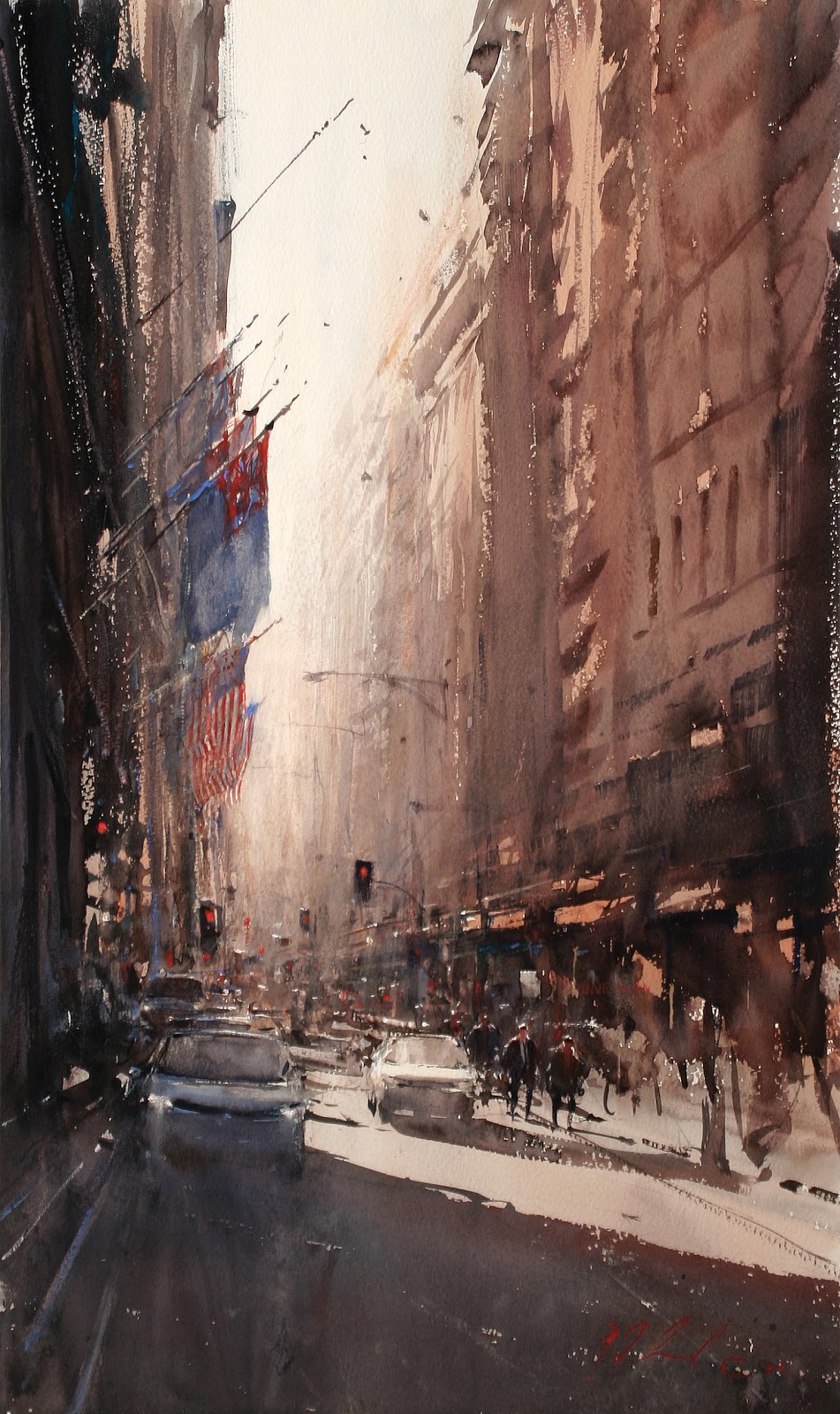
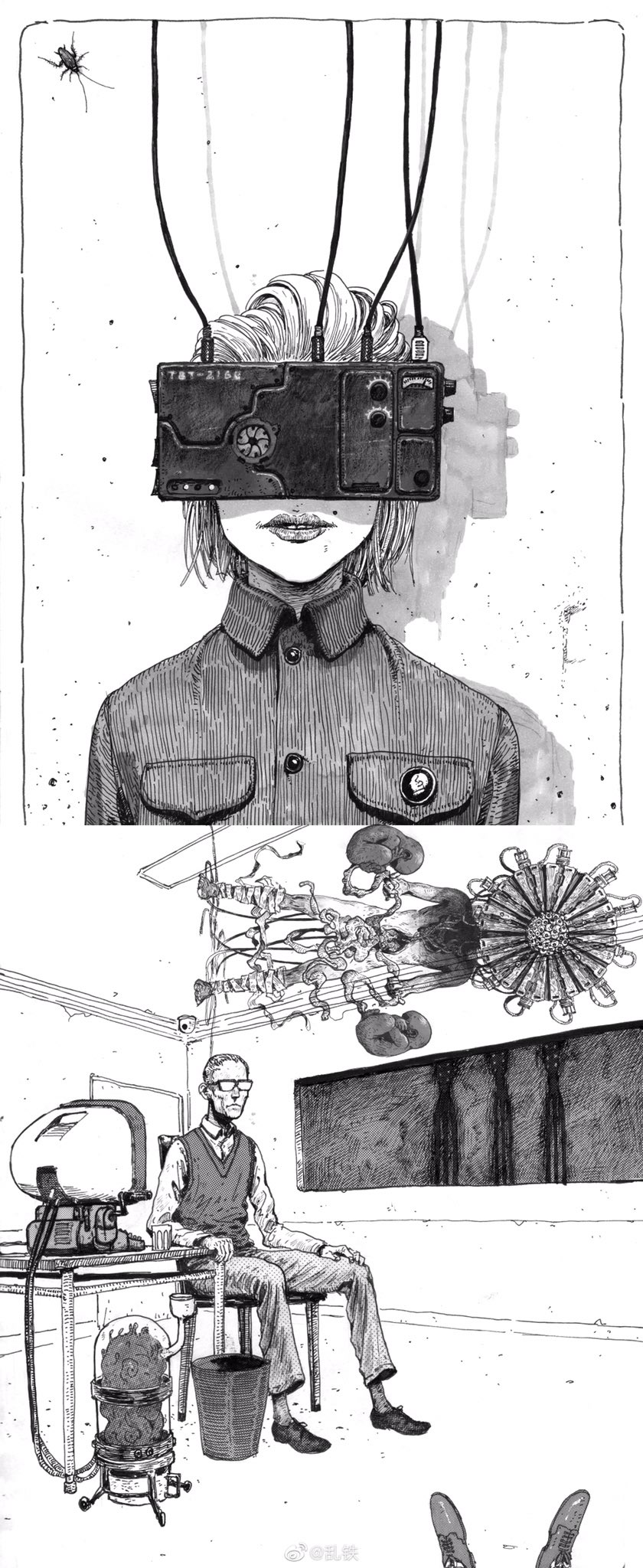
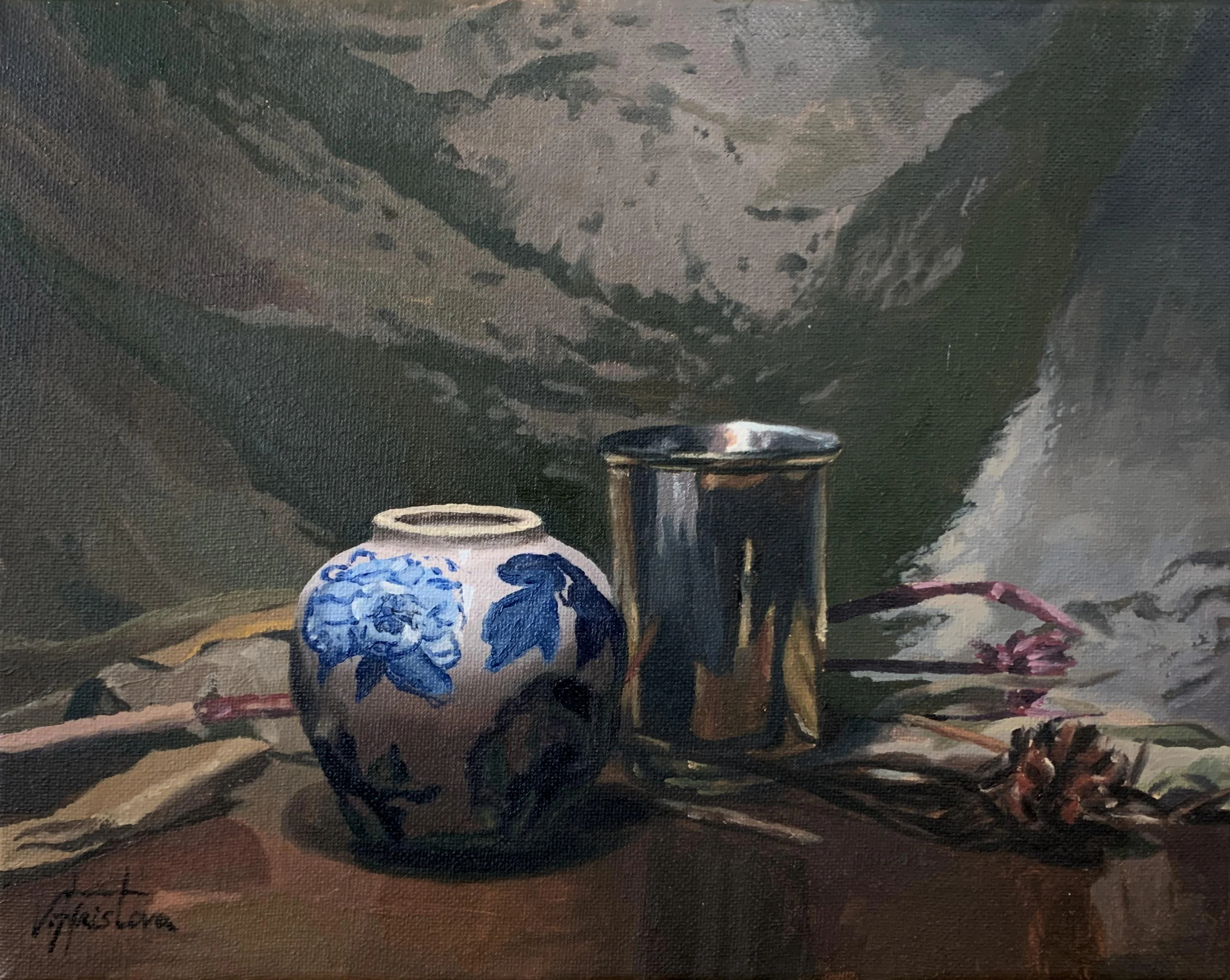

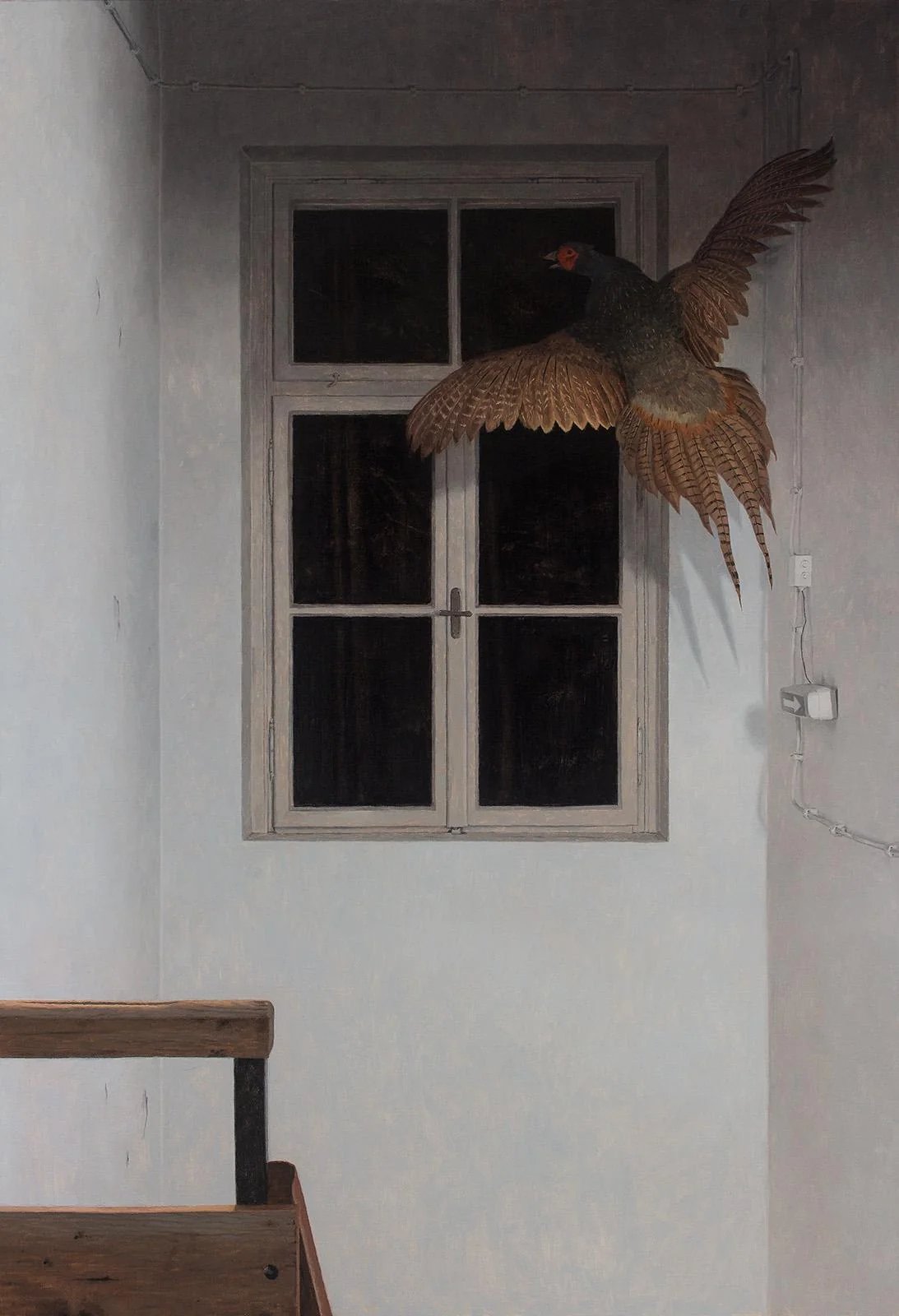

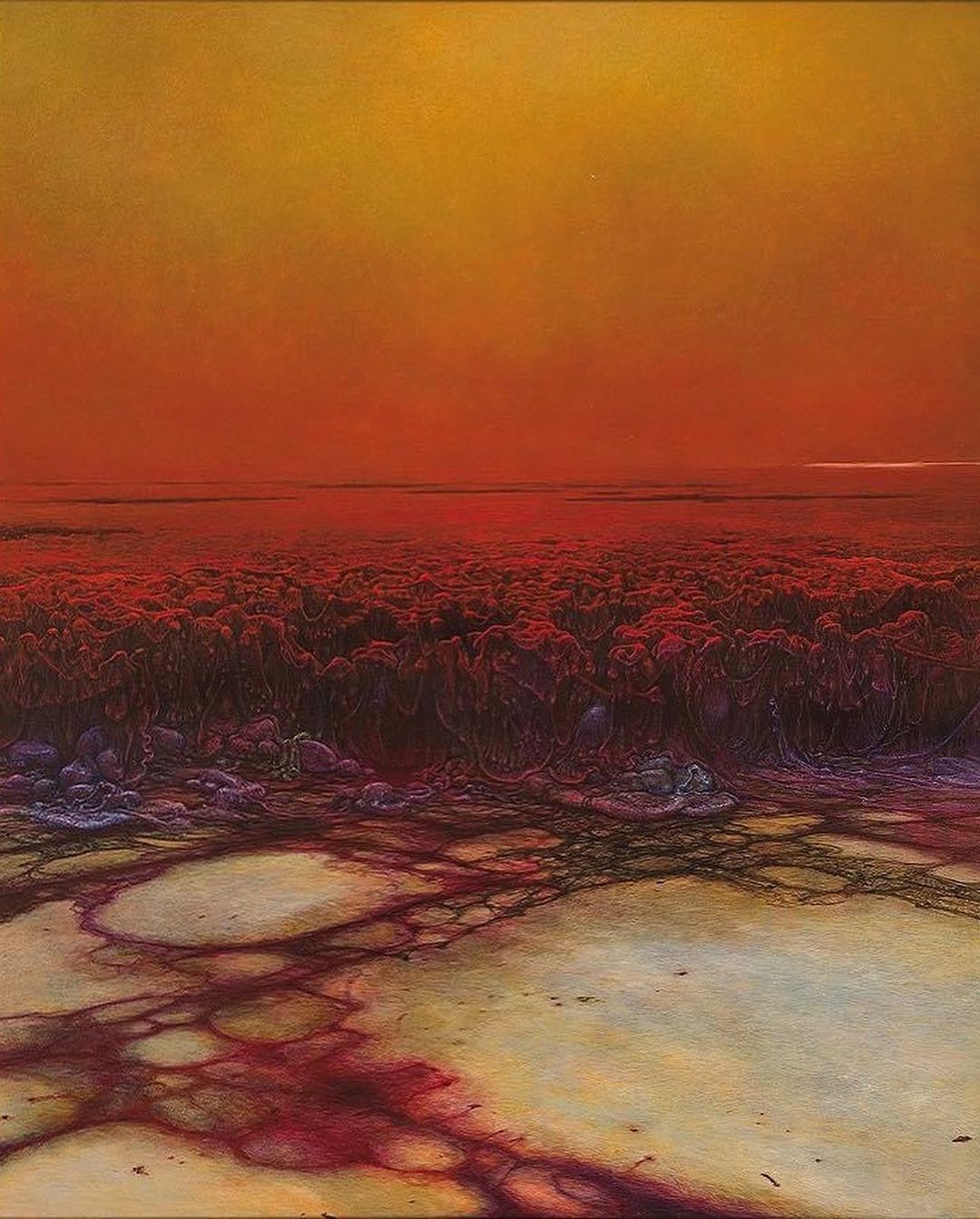
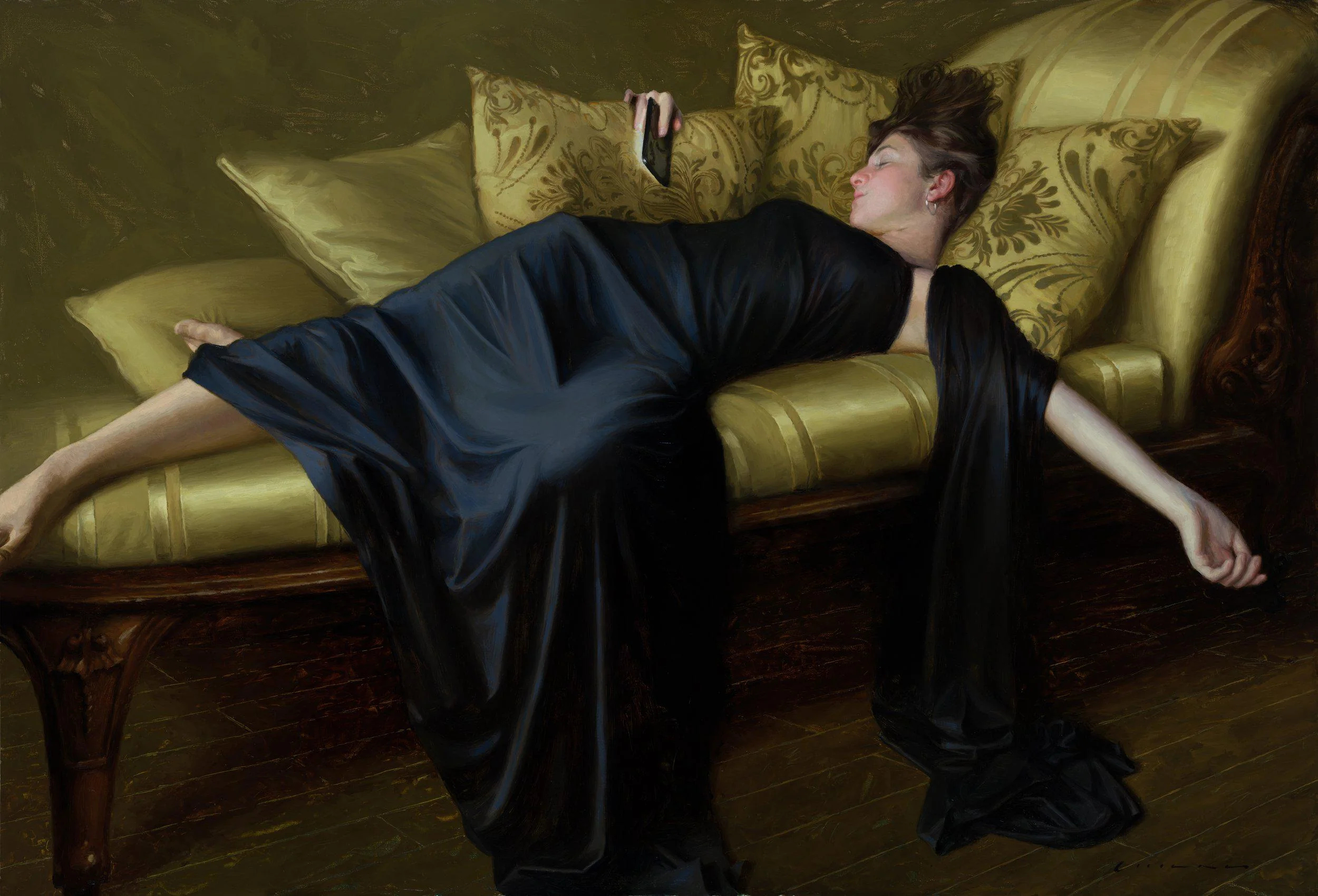
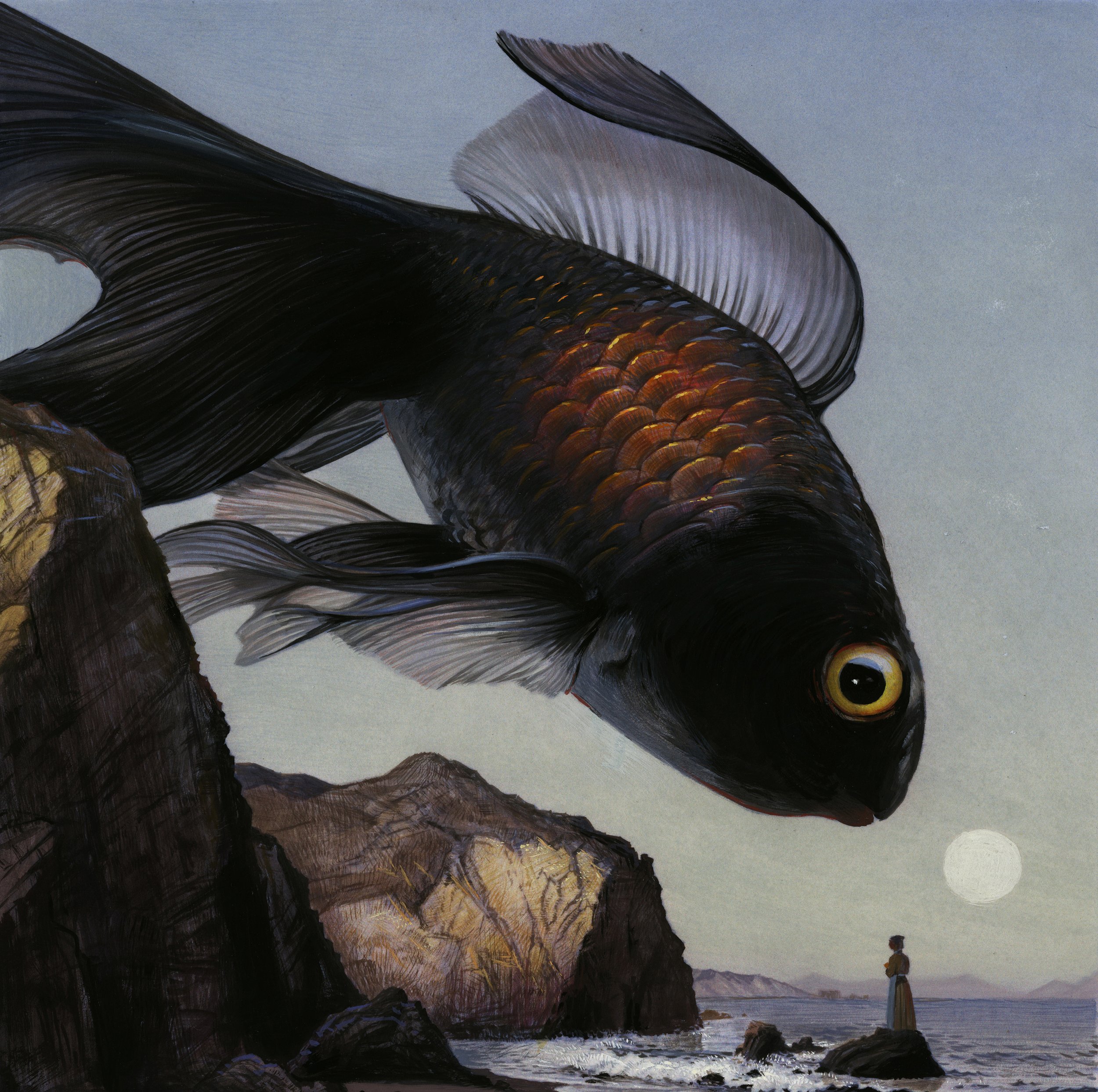
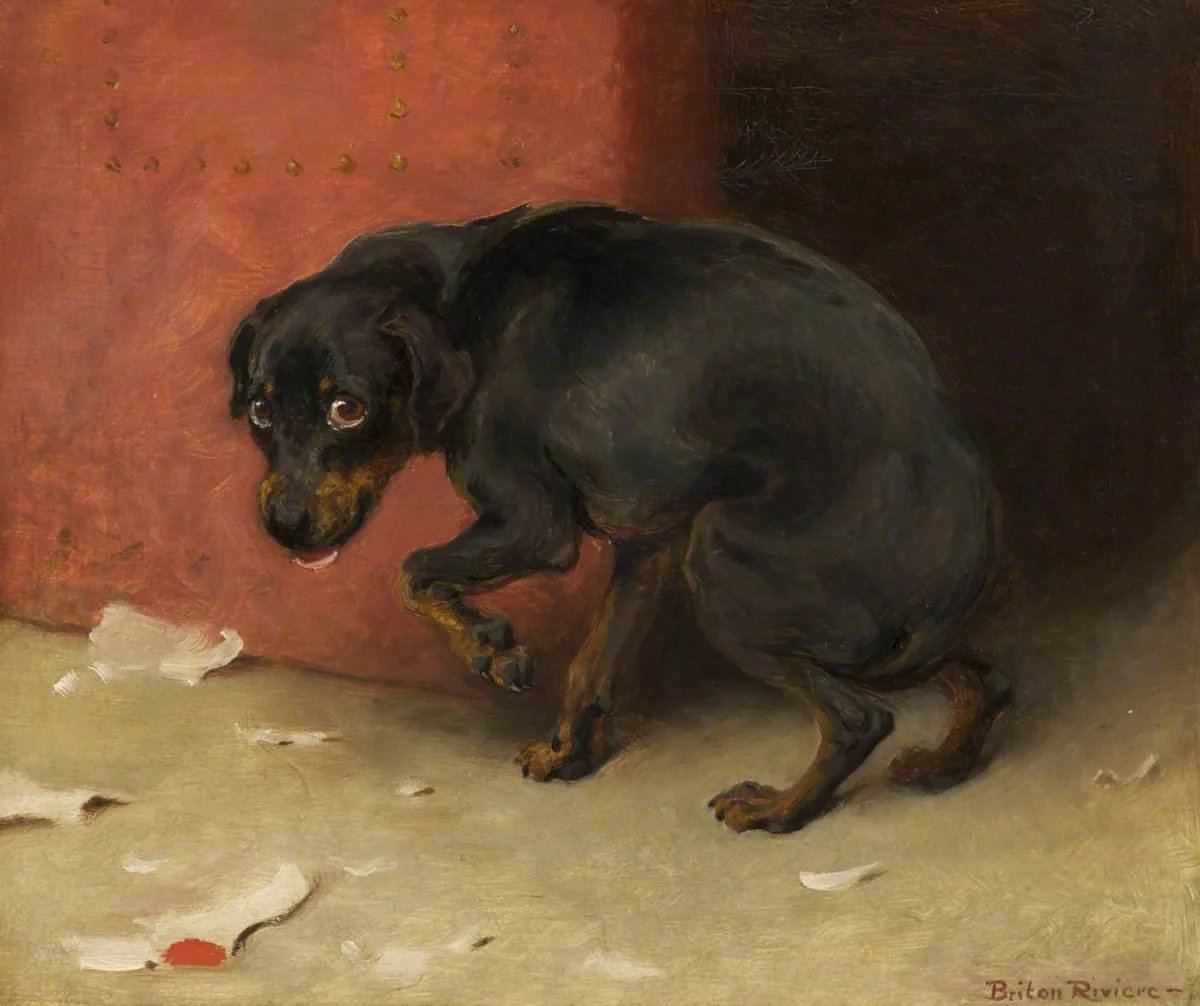
I wouldn't believe this was oil paint even if you told me! that's how stunning it looks